Thanks to Antony Lyons for the heads up.
|
Life's Journey on the Torridge is a film from the Boat Stories project, which is described as "a series of ten short documentary films about people whose lives revolve around fishing and working boats in northern Devon". This particular film focuses on Dave Gabe who was our skipper on the In conversation with water workshop. You can read more about the making of the film, or just watch it below. Thanks to Antony Lyons for the heads up.
0 Comments
Our fourth workshop took place on the 1-2 of October at/on/in the River Torridge. We worked with artist Antony Lyons and members from the North Devon Biosphere Reserve and the Devon Wildlife Trust to explore whether the recent Connected Communities-funded Ethical Guidelines for Community-Based Participatory Research might be extended to working with non-humans, specifically water. This is the seventh in a series of reflections on the workshop from our participants and is written by Julian Brigstocke. The idea of including 'the elements' in participatory research, and even participatory democracy, might seem whimsical. After all, the essence of politics, according to one influential tradition of thought, is action; and it is also this power to act that distinguishes the human from ‘mute’ nature. According to the philosopher Hannah Arendt, the space of politics (as opposed to the space of the social) is one that exists outside the cyclical rhythms of nature and makes possible the start of something wholly new – a break from the eternal return of identity. The question posed to us by this workshop, then, demanded a rather different way of thinking about the politics of water. Does water have the capacity to act (to originate something new)? Can it speak? What kind of practices must we invent in order to listen to it? We know, of course, that water can be immensely powerful. The news media continually fold water into political discourses through dramatic images of the destructive power of its presence, circulation or absence: floods, droughts, storms, torrents, waves, surges, tsunamis, glaciers. Our own encounters with water on this workshop, whether walking, swimming, or sitting on a boat, invited us to reflect on other powers: the power to evade, to transport, to conduct heat, to reflect light, to nurture life, to hasten death, to enliven the senses. Yet if water were somehow to be introduced into the sphere of democratic politics, it would not be enough merely to recognise and harness its power. Because democracy always requires structures of representation, participatory democracy requires not only a redistribution of power, but also a democratisation of authority. In other words, it needs a more egalitarian distribution of the capacity to guide, to offer advice, and to make claims that demand a response from the powerful. The challenge of participating with water, then, is an invitation to ask how water might be afforded democratic authority, rather than grasping political power. We have forgotten, perhaps, how to be guided by more-than-human life.
What kind of authority might water exercise? Classical models of politics tend to revolve around key figures of authority such as doctor, teacher and priest. Authority figures such as these offer verbal advice that cannot safely be ignored. The richly embodied nature of the activities of the workshop, however, suggested that taking advice from water will involve less representational manoeuvres. The authority of water is likely to lie, not so much in its ability to enter ‘in conversation with’ human others, or to stride forth into the demos, as in its capacity to co-operate in a democratization of the senses and a re-education of the body. Water can perhaps take on a role of healing, teaching, and spiritual guidance. Indeed, it has deployed this more-than-human authority in many different ways throughout history, not least in the major world religions such as Hindu that take guidance from water as a sacred space. What, then, does water teach us, and how might this invigorate democratic politics? As with all democratic teaching, the lesson will offer different things to different students. Water, after all, takes an infinite variety of different forms, and it already participates in every aspect of our lives. The activities of the workshop, tracing the flows and traces of water in the biosphere, navigating the river, loping barefoot in the mud, leaping in the water, forced me to think about water’s indifference to human affairs, its vastly expanded temporal horizon. Water’s lesson, perhaps, doesn’t come from ‘listening’ to it, or from trying to ‘think as’ water through a kind of empathic communication, but from encountering it in its difference, its muteness, its remoteness from human concerns. Indeed, it is this blankness, this link to the distant past and far future, that is the mysterious source of water’s authority. Our fourth workshop took place on the 1-2 of October at/on/in the River Torridge. We worked with artist Antony Lyons and members from the North Devon Biosphere Reserve and the Devon Wildlife Trust to explore whether the recent Connected Communities-funded Ethical Guidelines for Community-Based Participatory Research might be extended to working with non-humans, specifically water. This is the sixth in a series of reflections on the workshop from our participants and is written by Antony Lyons. It is productive - even necessary perhaps? - to have a pressing deadline, pushing me to gather my thoughts on this process of water interactions and conversations. A reflection, looking-back - to compliment the looking-ahead penned earlier this year... Recently, I was invited to a viewing of a documentary film about artist Anselm Kiefer, Over Your Cities Grass Will Grow, which contains some musings on water and life, including a kind of yearning for our origins in the salt seas (Kiefer comments on the similarity between the composition of our blood and that of sea-water). In a way, this echoes some narration text I wrote for a recently presented short film, alluding to a theory of connectedness between human brain evolution and shoreline dwelling/food supply (the Littoral Theory); the undeniable therapeutic influences of water and the sea; and of some interest to this theme, there is the Aquatic Ape Hypothesis. Below, I offer some images from a recent trip (back) to Lough Gur in Ireland - a watery place with which I've been connected since my early childhood. On this occasion I also sought out the nearby St. Munchin's 'holy well'; not a difficult quest, but one I've intended to undertake for many years, since stumbling across an old road-sign (to this well) in a reclamation yard in Bristol, my adopted home. The enduring reverence for this place - as evidenced by its upkeep and votive offerings - is a remnant strand of deep pre-Christian water enmeshment. This is still much in evidence closer to home - at Avebury/ River Kennet for example. Earlier this year, I also found such echoes in the mountains in Portugal - where I witnessed a living tradition of sacred respect for springs, pools and fonts. But how does this relate to our 'more than human' investigations in, and around, the River Torridge in Devon? Or to participative research with water? From the standpoint of both temporal and spatial distance, one of my most abiding memories from the workshop outings is the elusiveness of the river at its headwaters, at its 'source'; and the struggle over the boggy Culm grassland, with its sponge-like quality. To a large extent, this was in the plan, and therefore not expected to be straightforward (and water never is…). Yet the immediacy of the encounter - on the ground - was richer and more resonant than I predicted. In a limited way, we (through our squelching footsteps, like the grazing cattle) were interacting with, and adjusting, the locality’s water processes and patterns. I am left with a sense of water being all-pervasive in the pores, the microscopic rivulets of the land, and present too as deeper, warmer hydrothermal flows - again echoing water in living organisms, in humans and the veins of non-humans. (In passing, I am reminded of those moon rocks I studied as a geology student, which don't possess the myriad of tiny hydro-thermal veins that are common in earth rocks). This time of year, in North West Europe, water gets everywhere; rising damp; seeping through stone and brick walls; condensation; lingering as mist outside. The ubiquity of this material is like no other. Water is sponge-like in other ways too, with its ability to dissolve/absorb a multitude of materials (salts, metals, organic compounds), but still appear unchanged. During our awkward, ungainly progress over the Culm bogland, we encountered two seekers from the Water Company, on a quest for an underground leak from a water main. A serendipitous meeting and most appropriate. Two water ‘dreamings’ or songlines intersecting - in time and in space. There is a need, I feel, to range laterally in our investigations of water relationships; to look once more at the variety and nuances of indigenous/older perspectives and paradigms of connectivity to the world. A re-sensitisation? And since our October field excursion, I have uncovered a book by Jacquetta Hawkes; her tour de force, A Land (1951). Here is a quote from the introduction: In this book I have used the findings of the two sciences of geology and archaeology for purposes altogether unscientific. I have tried to use them evocatively, and the image I have sought to evoke is of an entity, the land of Britain, in which past and present, nature, man and art appear all in one piece. I see modern man enjoying a unity with trilobites of a nature more deeply significant than anything at present understood in the processes of biological evolution. I see a land as much affected by the creations of its poets and painters as by changes of climate and vegetation. What is wonderful about her writing is an embracing of a multi-faceted, multi-layered mycelial integration. A fluidity of space and - especially - time. Mutability. Complexity. Change. Extrapolating this to our current watery concerns, for me it suggests that water will not be constrained, defined, framed. Our interests, relationships and perspectives - whether sacred, philosophical or scientific - are just some small facets of the whole picture. The manifold manifestations of water are largely inaccessible, unapproachable. On the one hand, we have - as Ivan Illich pointed out - H2O (the waters of utility and industry - “a cleaning fluid” - and privately owned at that) and on the other hand there are “the waters of forgetfulness” (the mythic, symbolic, magical, unconscious). In the realms of water, we have the familiar - oftentimes romantic - 'water bodies' (rivers, lakes etc.) - relatively easy to sacralise; but water manifests as plutonic hydrothermal flows, abyssal vents, stratospheric clouds, industrial/sewage effluents - less easy for us to identify, or converse, with? (but all as real as the river…)
In the closing discussion of the 'Water Workshop', one of the emerging research ideas (or suggested thought experiments) was the prospect of speaking as…a river, a water molecule, a cloud. The meaning of this differs significantly from speaking with (in conversation) or speaking for (spokesperson). All three are imaginative, poetic leaps, (and all necessary expansions into the vitality of matter?) but speaking as involves an inhabiting of watery-ness. Perhaps this is shamanic? geopoetic? Perhaps it is not about porosity to the otherness of water(s), but a oneness with water(s)? A breaking down, or dissolution, of an insider/outsider dichotomy? (River Flows In You?) There is mystery and unknowability with water, as with any other non-human or human entity. One approach which currently interests me involves the practical insights that can emerge from changing time-frames (speeded-up or slo-mo film or sound). Our perceptions are locked in our time-relationship to the world; we are trapped by our senses and cognition. Other living/dynamic systems reveal extraordinary, marvelous, uncanny attributes when perceived in shifted time-frames. From macro to micro, other truths, cycles, rhythms, pulses emerge; vastly more powerful and enduring than our narrow and ultimately futile efforts of control. Our fourth workshop took place on the 1-2 of October at/on/in the River Torridge. We worked with artist Antony Lyons and members from the North Devon Biosphere Reserve and the Devon Wildlife Trust to explore whether the recent Connected Communities-funded Ethical Guidelines for Community-Based Participatory Research might be extended to working with non-humans, specifically water. This is the fifth in a series of reflections on the workshop from our participants and is written by Reiko Goto Collins. At the end of the workshop Michelle asked us how a new language might emerge from this workshop. I have been thinking about this question in relation to “empathy” that is my research interest and practice. Empathy is an act of perceiving in which we reach out to the other to grasp his/her state or condition. It consists of one’s emotional and physical experiences. The workshop was an experience-based enquiry. I did not know much about the workshop area, its landscape or catchments. I knew only a few of the people from previous conferences.. The workshop really began over dinner, with information shared by experts. Then the next day we would have an expert tour of the Culm a unique ecosystem, at the top of the catchment basin. We then had a boat ride in the estuary guided by a fisherman. We felt the landscape changes from the mouth of the river (with its old industrial structures, and new summer homes) to the wooded upper river that came alive with wildlife. Meanwhile Antony was checking the conductivity in the saline water, everyone was taking pictures and talking together. The last day of the workshop we were asked to go into the Torridge River. In early October it was a cloudy day. I did not bring my swimming suit. Niamh was impressive, she jumped in the Torridge River first, then others followed little by little. François said something touched her foot in the water. Was it fish? This encouraged me to follow them. The middle of the river was deeper but people could stand on the smooth riverbed. The water was cold. I put my face down to float. I felt little fear until suddenly I felt a sharp pain on my shoulder. (I am being treated for a bad shoulder.) But when my body started floating, I became relaxed. I could see under water. It was greenish brown. The colour of the water reminded me of similar experiences in Pittsburgh, Pennsylvania, U.S.A. Tim and I worked on a research project called 3 Rivers 2nd Nature (3R2N) between 2000 and 2005. It was one of the summers we were on the project boat. Tim and I had dived in the Allegheny River. The water was warm but refreshing, it felt endlessly deep and big, it felt wide and very long. I could not see much, just greenish brown colour. We had spent years learning everything we could about the ecological recovery of nature and culture. I still hear the voice of that place, its experts and communities. And in my mind I still see myself going through the landscape, with millions of Mayfly in the air, and schools of fish cfollowing and playing with our boat. Empathetic experience moves towards something foreign rather than something familiar. In this workshop the greenish brown coloured water was something familiar and the coldness of the Torridge River was the foreign experience for me. I was surprised when I did not become panic in the water when I could not rely on my arm because of the shoulder pain. I sat on the anchor of the bridge to watch other people. It was another foreign experience to be in the water together. I thought about the last two days talking, eating and doing things together with a respectful manner, but we did not know each other much. We kept smiling at each other. After we dressed again, we became a little more playful. We dropped twigs from the bridge to see which one could go through the bridge first. Owain’s fern won. Touching the water in the Torridge River was important. In this case asking the water by touching it. It was a trigger for an “empathised experience” that would come from real life or form within ourselves, our inner perception.
Any one can touch the water of the river. It is quite possible a person does not have any memorable experience of a river. Then, the experience becomes foundational; but this is not likely. Everything we do is a learning opportunity that may expand experience it may not prove to be meaningful until some time in the future. How about people who have had a water epiphany already? Touching water is a beginning of the discourse to listen to others including people, things and the environment in deeper level. After the workshop some people submitted their reflection writing. Different individuals experience and expertise result in diverse stories. Each of us is connected to different parts of the world. Each of us shuffles the words and re-constructs the story for the new audience. In this repeated process a little schism occurs. Empathy tries to fill the gap between familiar and foreign, known and unknown within new experience, and perhaps with other people’s voice. If we meditate well in this process we may understand others a little further. New language can emerge when we understand the other and find the reason why it as important us, as other people are. Reiko Goto Collins, 30 November 2013 Our fourth workshop took place on the 1-2 of October at/on/in the River Torridge. We worked with artist Antony Lyons and members from the North Devon Biosphere Reserve and the Devon Wildlife Trust to explore whether the recent Connected Communities-funded Ethical Guidelines for Community-Based Participatory Research might be extended to working with non-humans, specifically water. This is the fourth in a series of reflections on the workshop from our participants and is written by Françoise Wemelsfelder. For this project we spent a lovely day experiencing and engaging with water, and here are some of my reflections. Water always brings flow, life force, fluidity, transportation, open-ness. Most people enjoy being near water, it has a presence that differs from being on land, it is moving ground. But it is also dangerous, nothing to hold on to, and when that force gets going, it is terrifying. Last night I happened on some youtube clips showing huge storm seas and waves and swells in which boats were tossed around like little toys. I was mesmerised, awed, by the power visible. I experienced that power too close for comfort, capsizing in a yacht at sea steered by an incompetent skipper, tossed into the waves. And so at our water workshop, my body, climbing into a small motor boat to negotiate a placid river on a calm day, remembered and shuddered.
Our fourth workshop took place on the 1-2 of October at/on/in the River Torridge. We worked with artist Antony Lyons and members from the North Devon Biosphere Reserve and the Devon Wildlife Trust to explore whether the recent Connected Communities-funded Ethical Guidelines for Community-Based Participatory Research might be extended to working with non-humans, specifically water. This is the third in a series of reflections on the workshop from our participants and is written by Clara Mancini. Reflecting on the experience of this workshop makes me think of Leonardo da Vinci. To me he represents the perfect synthesis between the artist and the scientist, who like no other could at the same time creatively intuit and rigorously study what Donna Haraway would call nature’s material semiotics. Leonardo’s boundless intellect and empathy allowed him to grasp things about nature that the world would take hundreds of years to catch up on. What I have learnt about Leonardo’s attitude towards nature seems relevant here: perhaps the reason we struggle with the idea that water (or trees, or bees or dogs) have agency and can participate in research is because our thinking is bound by all we have learnt about what agency and participation are supposed to be, and by the divisions and limitations that non-empathetic eyes have imposed on beings whose semiotics are material rather than abstract. Leonardo had a thing for water, the “vehicle of nature” as life-giver and taker, and its natural cycle’s metamorphoses and constant shaping work (often represented in his paintings as rivers running across the wilderness of rocky landscapes). Indeed this workshop has made me reflect on the essence of water not as an abstract, chemical entity, but as a “vehicle of nature”. I felt this quite clearly during our boat trip on the Torridge, particularly once we left behind Appledore’s port, with its engineered banks and crowding boats, and we started encountering immense trees and rolling fields, and many species of bird going about their daily life along the sinuously narrowing river. In that place it was easier for me to think of water as ‘someone’, perhaps because animals and plants have no means to override water’s agency and have to negotiate with it instead: the trees’ leaves did not grow below the tidal level, birds were floating with the current, and the banks were undulated as the river had designed them. In contrast, back in the port, the tidal bell that didn’t work seemed to me rather emblematic of humans’ tendency to override and thus fail to grasp the workings of nature. I wonder, would the fishes and birds who live with the river make the same mistakes we make in our ‘management practices’? Have our abstract semiotics, which allow us to learn from books and be bound by what we find in them, made us unable to encounter reality with innocent eyes and empathy? Leonardo thought that Experience was the mother of all Knowledge and indeed perhaps certain material semiotics simply escape abstraction and are only accessible if experienced with the boundless intellect and empathy Leonardo had. Perhaps we cannot explain away water as a participating agent, but perhaps we can know it as such by experience when we witness and engage with a system of relationships (such as that which exists between a river, its birds, trees and banks), which water sustains and shapes. One of my favourite quotes from Leonardo is: Study the science of art. Study the art of science. Develop your senses, especially learn how to see. Realize that everything connects to everything else Just as water is part of everything that lives and everything that lives is made of water, this workshop has made me feel more than all the other workshops how human and more-than-human are essentially and fundamentally connected, and has made me wish that our academic modes of enquiry and knowledge, and their semiotics, were just as boundless.
Our fourth workshop took place on the 1-2 of October at/on/in the River Torridge. We worked with artist Antony Lyons and members from the North Devon Biosphere Reserve and the Devon Wildlife Trust to explore whether the recent Connected Communities-funded Ethical Guidelines for Community-Based Participatory Research might be extended to working with non-humans, specifically water. This is the second in a series of reflections on the workshop from our participants and is written by Owain Jones. “All water wants, all water ever wants, is to fall” I did say – on a few occasions, we had not discussed gravity enough. We did seek out the high places to start with, where the waters on the upper slopes creep through the culm wetlands, amass into tiny rivulets and then into a discernible stream. (If we could find it – which we did – in the end). And there right at the top of the catchment, wriggling life was stuck to the brown rocks Tim pulled from the water with surface tension. But yes, the top of the catchment. With a journey to make, down through the stream, then river, then mingling with the tidal ebb and flow, a ‘river beneath the river’ as Philip Gross has it. Testing for salinity or freshness to find the river in the water. But who is to say where the catchment really starts? Does the gravity that pulls the rain down form part of the catchment? What about the clouds carrying the water vapour , what about the prevailing winds that might carry falling rain across country into the catchment’s ‘air space’. Humans are so good at naming things, at making the world into objects. Rivers. Rain. Stream. I don’t think the water really heeds such distinctions. But now, in a discernible stream, a run of water of such age and power that it has carved out its route into the land. Not straight down of course, but meandering, finding the path of least resistant through soil, tree roots, strata of rocks. And it carries. And it is home to some. Water we are told – is inert, this is why it is such a good basis of life. The matrix of cell activity > life. In it things can meet. Water is the ultimate networker, the relational god. And the fresh water mussels – we are told – live in the flow of water for maybe a hundred years, putting on their shells like tree rings. But they have not bred for fifty years. The connections and the carryings are troubled. The loose materiality of water is animated by gravity - it is workable, by a fin, or webbed foot, or oar of diesel driven propeller. But it hangs together enough to have weight. To press back on the hull of the boat, on our bodies as we swim. Jan Salby – in his critique of empathy asks: “How might one possibly do this: imagining being the other - without inevitably projecting and thus imposing what is in fact our own ‘being’ onto the other person? Can we really successfully, genuinely imagine being an other person?” (Or for us - being an other non-human) Please excuse this longish quote, but here is the start of his answer. It not the whole answer of course, but I feel in some respects we began to enact this kind of procedure when in the boat, testing the water, swimming etc: "Recent phenomenological work on what has become known as interaction theory has the potential to make some progress in this regard, putting forth a possible alternative to empathetic perspective -shifting. It is no accident that interaction theory thoroughly breaks with simulation accounts of empathy. This approach, as developed by authors such as Shaun Gallagher, Joel Krueger, Thomas Fuchs, Matthew Ratcliffe and others, does not conceive of the understanding of another’s mind as a case of one person simulating or mirroring an other’s mentality, but instead focuses on mutual interactive engagement and on an emphatic co-presence or ‘being-with’ one another. Instead of the inquisitive attempt of one ‘mind’ getting ‘at’ or even ‘into’ another, a kind of joint agency, and joint active world-orientation is established. With this, interaction theorists appreciate what has just been shown: that the only way to meaningfully engage with another person’s mentality without imposition is by engaging with them on the level of agency — establishing co-engagement, as it were, for example by jointly enacting a project. “Participatory sense-making” has been one helpful concept developed for this purpose (de Jaegher & di Paolo 2007), another is the concept of a “we-space” (Krueger 2011) —a realm of co-presence, bodily enacted between interacting individuals. In these various forms of joint active engagement, the interactants might come to achieve a kind of coalescence that brings forth exactly the kind of ‘union of minds’ that advocates of empathy strive for — not by way of simulation but rather by first building up a joint perspective on the world that both may then adopt as their own. Thus, there is an active, constructive and forward-looking element here that establishes connection between individuals—instead of a miraculous bridge between two essentially closed-off inner realms.” Our fourth workshop took place on the 1-2 of October at/on/in the River Torridge. We worked with artist Antony Lyons and members from the North Devon Biosphere Reserve and the Devon Wildlife Trust to explore whether the recent Connected Communities-funded Ethical Guidelines for Community-Based Participatory Research might be extended to working with non-humans, specifically water. This is the first in a series of reflections on the workshop from our participants and is written by Tim Collins. In an age when man has forgotten his origins and is blind even to his most essential needs for survival, water....has become the victim of indifference. 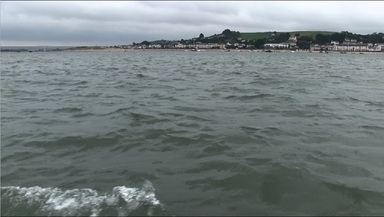 Going into this I thought about what I know. I am a water being, nurtured in the amniotic sea then born to the Pawtuxet River Watershed. I know water as an image that can be re-presented through a range of art media. I know water as an idea and a poetic reverie through thinkers like Bachelard. I know water as a requirement of life, delivered, purified and putrefied as it passes from watershed through potable systems and back out again to the world as sewage and waste water. I know water as the substance that dissolves all things, that picks up traces of everything it comes into contact with. I know water in terms of its relationship to the air, and the airs relationship to it; I have seen its breath in the fall. I know water in terms of its process of erosion and deposition. I know water as a physical chemistry, as a nutrient laden fluid that dissipates its own life giving oxygen content, as a bearer of pathogens and toxicants. I know water in its freshwater forms and saltwater forms, its densities shaped by both minerals and temperature. I know water as Mother Ocean; her tides and waves, the source of fog, wind and life on earth. I spent years chasing swells and tides, reefs and sand bars, peaks and troughs. I know water as the home of creatures that have played along side of me, otters, dolphins and seals that take the same pleasures in engaging that environment with others. I know water as the miraculous expanded gas that collapses into liquid then a solid that miraculously floats. This latter fact is an odd essential material condition of life on earth; otherwise the ice sinks and overwhelms the warmth of the sun. Three days, maybe five without water and I am dead, this is all that I know about water as a human on planet earth. "Water is the one substance from which the earth can conceal nothing; it sucks out its innermost secrets and brings them to our very lips" As an artist I know that a drop of water in an overhead pool produces shadows that levitate from a spot on the floor that rises up the walls in concentric circles. I know chemicals that burst into flame with a drop of water. I know that if I place ten quail’s eggs into an aquarium filled with salt water and fresh, at least six of them will settle in the middle of the tank, suspended on the salt water. I know how much water it takes to counterbalance myself ten feet out a third story window, raising questions about water within and water outside the body, questions of balance and flow, public and private, nature and culture. I know that the water system of the City of San Francisco was purchased from private industry for the same price paid for the entire state of Alaska. I know that Kana Wai, is the law of water, the Hawaiian alternative to the law of the land. Curiously it demands equitable co-responsibility and sharing of the resource versus private ownership and property rights. I recognize water as material, as phenomenon and as ecological system in the work of the grandfathers and grandmothers in my field of research, practice and creative inquiry. I recognize water it recognizes me, maybe this is why dowsing works. The fairies who have just surprised a boor who has polluted their spring are in secret conference: "What do you wish for the one who muddied our water, my sisters?" "That he become a stammerer and never be able to articulate a word." "And you my sister?" "That he always go about with his mouth open and stand gaping in the street." "And you my sister?" "That he never take a step without, all due respect to you....breaking wind. As a Workshop Participant As we say in Scotland, there were times I was lost in the blather. Wondering why we were sitting on our asses when there were springs to be hunted, to be chased on muddies knees, to listen to the spot where water emerges from the soil… but I learned that was not what we were about. At least not logically. Clara on the way would say… "‘Look’ the landscape has changed what is that?" It was the colm (culm) we were searching for. But we were prepared for a landscape survey, a visual relationship rather than the mud and boots, body, mind and soul, the sound and the mud variation of spring hunting that I prefer. At least not to start, but… the boat trip changed that, a long reveries, a Conradian adventure, where we were not so much lost, but dazed and confused in the depths of the land, steered by a waterman who I think drank to our madness that night. Starting from where the social/cultural infrastructure had collapsed at the mouth of the river, from when we began, to the trip toward the headwaters where the hand of man faded, then the riparian forest dipped in. The saline flood of the tide, manicuring that forest to create an exquisite line, above the air began to fill with the birds and we all – sensed this IS the right place. The salt water / sweet water experiments entertained me to no end, its important when mucking about in boats to have a reason to put your hand in the water! But the kicker was the immersion; Reiko and I didn’t believe that British researchers would do it. When we realized it was so we were down to our underwear (one does not skinny dip in Britain, despite the sensibility of it). In we went, a ponderous swim for me who is usually the water person. I was worried (Reiko has a bad shoulder and struggled to clear the bridge abutment) and as a result distracted and cold, but nonetheless managed a stream-addled version of ‘Breath’ by Birago Diop under the bridge. Listen more to things Than to words that are said That dip in the water reminded me that it is only in immersion that we can hope to have any clarity about a relationship with a non-verbal thing. The river speaks to all of us. It shaped our emotions and perceptions, it threatened us and embraced us. We swam despite passer-bys warning us not to… but more importantly as we stood in the stream we realized that beneath the surface was an incredible life force as living things rolled across our feet. Picking up a rock, I found the caddis fly chamber I had been looking for, Reiko said ‘them’, they –are- here… ; ) Eutopia versus Utopia: Issues of the Regional Imperative: Why work together, with water? I don’t think that we can simply work together with water; it works through us, it is us. 'Why listen to it?' and 'What can it tell us?' might be better questions. When we link human to communities of ecology and the complex material/life interactions in place we have to remember to think differently and reshape our ethical parameters. To listen to water takes all the skills and ability, tools and technology, chemistry and attention that we can muster; in which case, simply put, it tells us everything about the world around us. The fundamental question is how is an artist or humanities scholar’s method differentiated from that of a scientist? Traditionally it's through looking, but a gaze is not enough anymore, it requires sustained being-with, it is about intimate inter-relationship over time so that we begin to see a normative aesthetic, a condition of baseline health which allows us to see the signs that tells us that something has changed. To do this work well (which we have in common with science) we must love the subject of our inquiry. Differentiating the arts and humanities, it is what we want to know, what we need to experience, the purpose of aesthetic empiricism if you will. We are not looking for definitive reproducible answers; we are looking for core experiential truths that dip below the surface, that engage the heart, the mind, and the soul at the same time. But at the end of the day, we have to work with water on its own terms. Thoughts on the Community-based Participatory Research Guide. [In our last session of the workshop we worked through core questions from the Guide to Ethical Practice in Community-based Participatory Research to explore how they might apply to research with water - Ed.] "Water is the principle, or the element of all things" Who should be involved? Anyone who has spent the time to develop an empathic relationship with living water in that place should be engaged. Empathy only emerges in place over time, it is recognition of the normative health of a living thing that leads to attention to those things that indicate disruption. The question is can we see pleasure and joy in living things that have neither language nor eyes with which to speak to our ears or our heart. "In the dialectical theme of the purity and impurity of water, the fundamental law of material imagination acts in both directions, guaranteeing the eminently active nature of the substance: one drop of pure water suffices to purify an ocean; one drop of impure water suffices to defile a universe." What are the Aims and Objectives of the Research? Funny questions: Surely we all realize that the objective is to trust ourselves as we strive to hear things from something that does not speak, to find emotional communion with a living thing that has no eyes. Our goal is to find our health and wellbeing in it, and it in us; to recognize the ethical principles that underpin this endeavour. …Water is the only substance on earth that naturally occurs in all three states at temperatures we normally experience: solid, liquid and gas. "No scientist ancient or modern has ever managed a quantitative description of the thermodynamics of water, it is to the structural analyst what Waterloo was to Bonaparte. Tens of thousands of years ago our wise forbearers shared myths wherein water was said to be the primal, chaotic substance from which all forms proceed. It is clear that our forbearers have not been refuted, clarified or improved upon. " How to analyse and interpret data?
Honestly, with humility and attention to the role that the arts and humanities play in the conception, perception and experience that leads to a critical understanding and potential evolution of human values through a reflective relationship with water. Water speaks to us through its component parts, its dissolution and erosion, its non-structural integrity, by its ability to flow around and about, through all things, to embody the lightest breeze, the smallest drop and the wildest gale, taking the form of the force which engages... Fini: Tim (with Reiko in mind, although she has her own notes.) Our fourth workshop took place on the 1-2 of October at/on/in the River Torridge. We worked with artist Antony Lyons and members from the North Devon Biosphere Reserve and the Devon Wildlife Trust to explore whether the recent Connected Communities-funded Ethical Guidelines for Community-Based Participatory Research might be extended to working with non-humans, specifically water. This post originally appeared on Antony Lyons' blog and explores the planning process for the workshop. "You can't keep water down"
This comment bubbled up in discussion with Dr. Owain Jones at his PLaCE seminar talk last month (the final instalment of the long-running PLaCE Research speaker sessions). Over the coming weeks and months, I'm aiming to write a detailed blog-post on what could be termed the 'geopoetics' of each of the materials woven in to my intermedia installation for the recent Tramontana Festival 2013. Water is the topic of the first of these. Water, and water matters, pervade and infuse most of my landscape-based projects, and this 'element' looms large throughout my background of transdisciplinary activity, bridging across science, design and art. In the late 1980s I was to be found carrying out greenhouse experiments with duckweed (Lemna spp.), testing the potential to bio-cleanse industrial effluents. As the wheels of time tend to bring one back again, I have once more found myself in a close encounter with this unpretentious plant - in the context of a symbolic material incorporated in an intermedia art installation (more on this in a future post). For many years I have been involved in research, development and promotion of what were - in the '80s - the relatively novel eco/water/design-technologies of 'reed bed sewage treatment' and 'sustainable drainage systems' (SuDS). These involvements continue today, but are increasingly located in creative/visioning modes, rather than in the applied technical realms. Water often surfaces in unexpected ways. One new and unpredictable scenario for me is an involvement with a research project that sets out to explore (in the context of 'more-than-human participatory research') some aspects of being 'in conversation with water' and 'designing with water'. For this project, my role is to be a lynchpin of sorts, and to lead a field-trip to the River Torridge, in Devon - site of my 2012 collaborative residency project, Shadows and Undercurrents. This novel confluence of topic and site has led me to reflect on my own long-term and deep participation with water, water-bodies and water-ways (their ecological health, their dynamics, their secrets...). You can read the rest of Antony's post here. 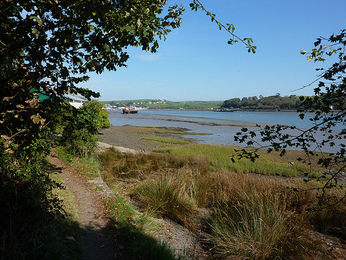 The Torridge Estuary Martin Shelley (CC BY 2.0) The Torridge Estuary Martin Shelley (CC BY 2.0) I've already written about some of the thinking we've been doing as part of the process of planning our workshops. It's proving to be a fascinating process in and of itself. Last week I had a chat with Antony Lyons, who is working with Owain Jones to organise our fourth workshop "In Conversation With Water". This workshop will be taking place in early October and our research partner in this case will be the Torridge River in Devon. This project is all about pushing the boundaries of 'polite' research conversations to see who or what might be included. So we're really excited to be involved in a process where we need to think about how to include water as an active participant in research. In a way, this sounds like the craziest of all our ventures, but in my initial discussions with Antony, when we were preparing the original bid, I asked him whether it might be possible to take account of the capacities, qualities and agency of water in the research process. His answer was "of course". In a sense this is already what water management strategies are required to do. A water engineer is already expected to know these things as part of their job. This made me wonder whether it might be possible to say that water actually already has more of a 'voice' in the research process, than dogs, for example, where full knowledge of their capacities and qualities is not a pre-requisite for working with them. Even so, I remembered from my former life as a graduate at Mouchel, working on waste water projects, that the emphasis when working with water was more on controlling it than supporting its ability to remake places as it wanted to (for example through the use of Sustainable Urban Drainage Systems). In discussing how Antony might organise the workshop two main issues came up. First how were we going to actually have a conversation with water? The first day was set aside for this, and once I reassured Antony that everyone really was up for some adventurous encounters, he suggested that we might go out on kayaks, go snorkelling or explore other ways to get out onto the estuary and interact with the river. The second question was what would our focus be? Having a particular issue to frame our readings, thought processes and planning would hopefully help us drill down into some specific issues rather than only talking about water in general. The issue of control had been an important one in our reflections on the In Conversation with Dogs workshop and Antony suggested the flood control would be an obvious topic that might help us combine our observations across those two workshops. We could then explore how methods of flood control affect the 'aliveness' of the river. We could also draw on the participatory research already done with communities affected by flooding such as the Knowledge Controversies project led by Sarah Whatmore. Antony will be writing a post for the blog to help us think through this further, and we'll also be having discussions with Andrew Bell from the North Devon Biosphere reserve who will be helping to lead the first day. So more thinking and planning to do, but it's shaping up to be a very exciting workshop. Michelle Bastian |
Archives
October 2018
Categories
All
Links
Animal Computer Interaction |
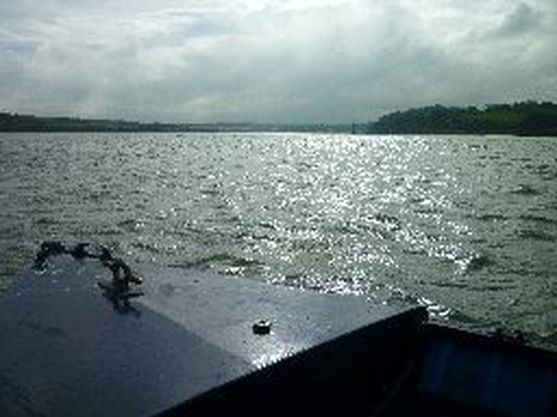
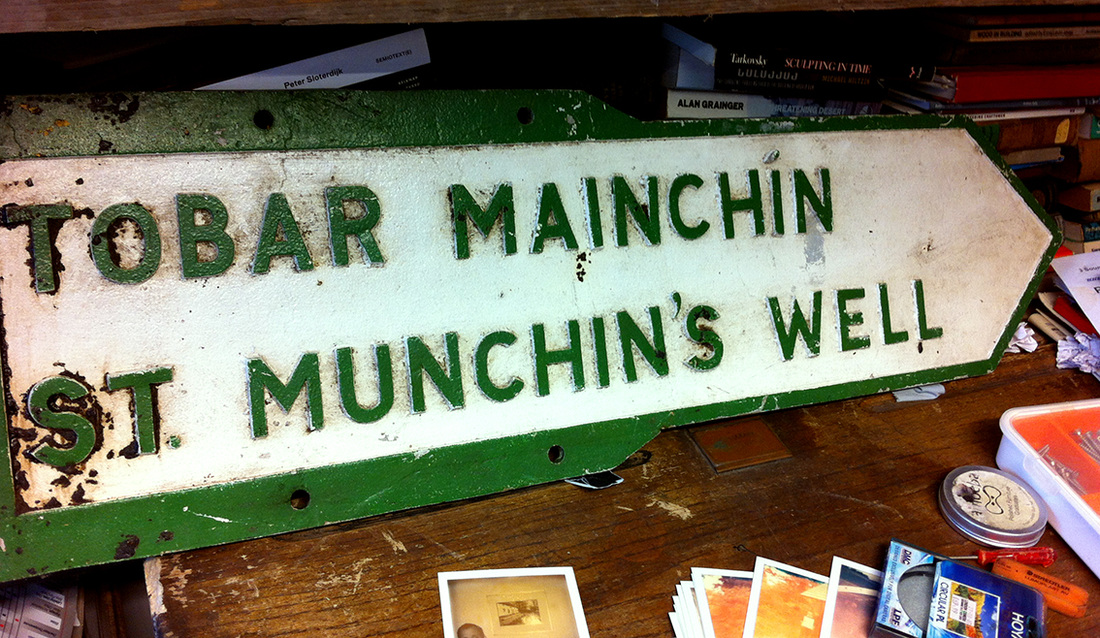
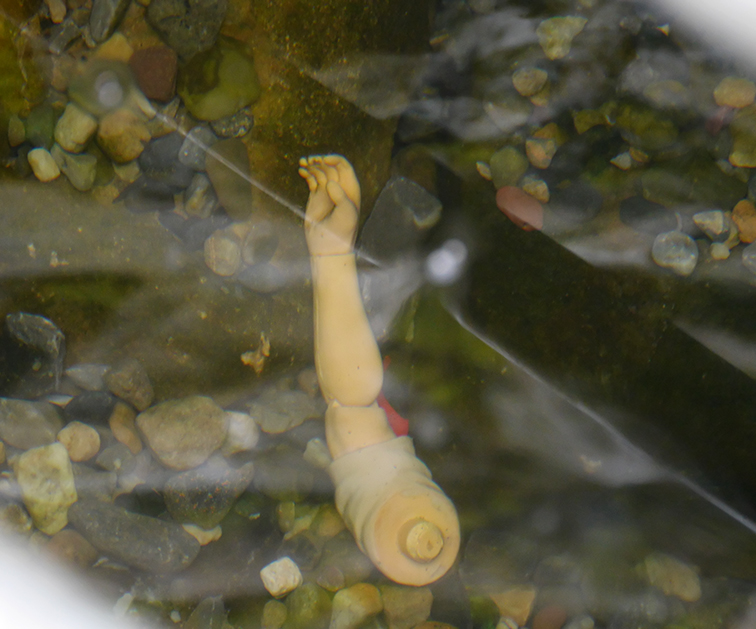
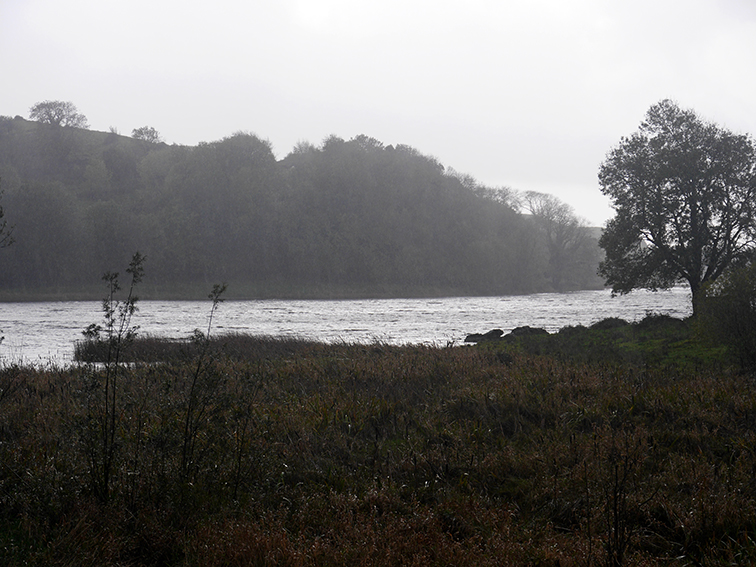
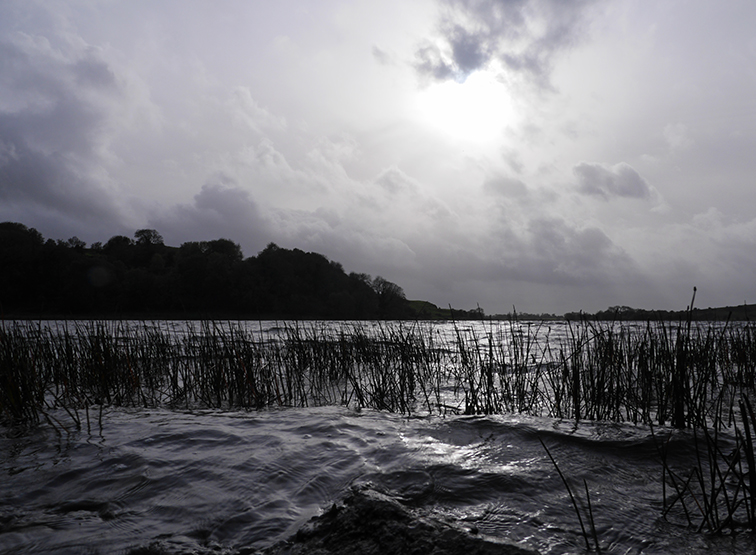
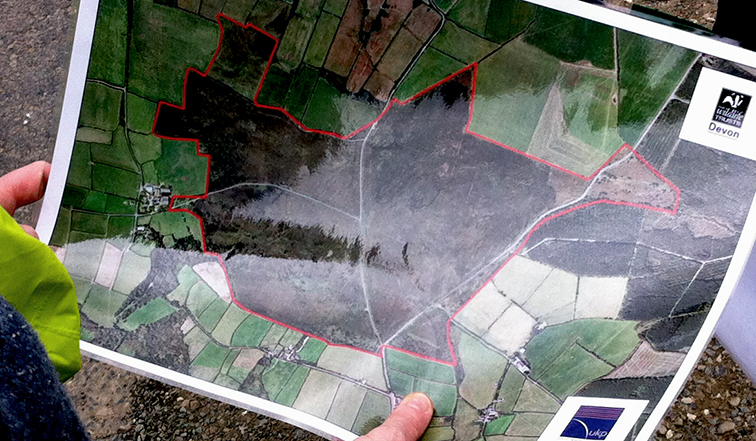
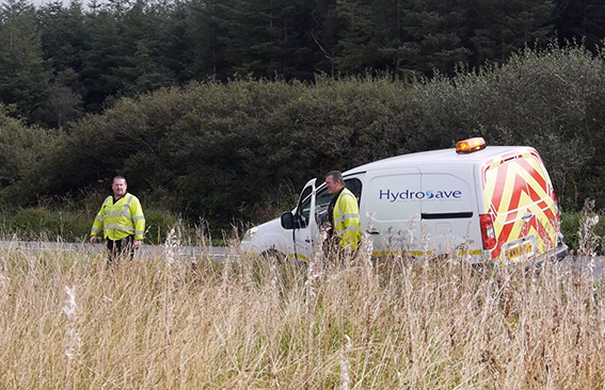
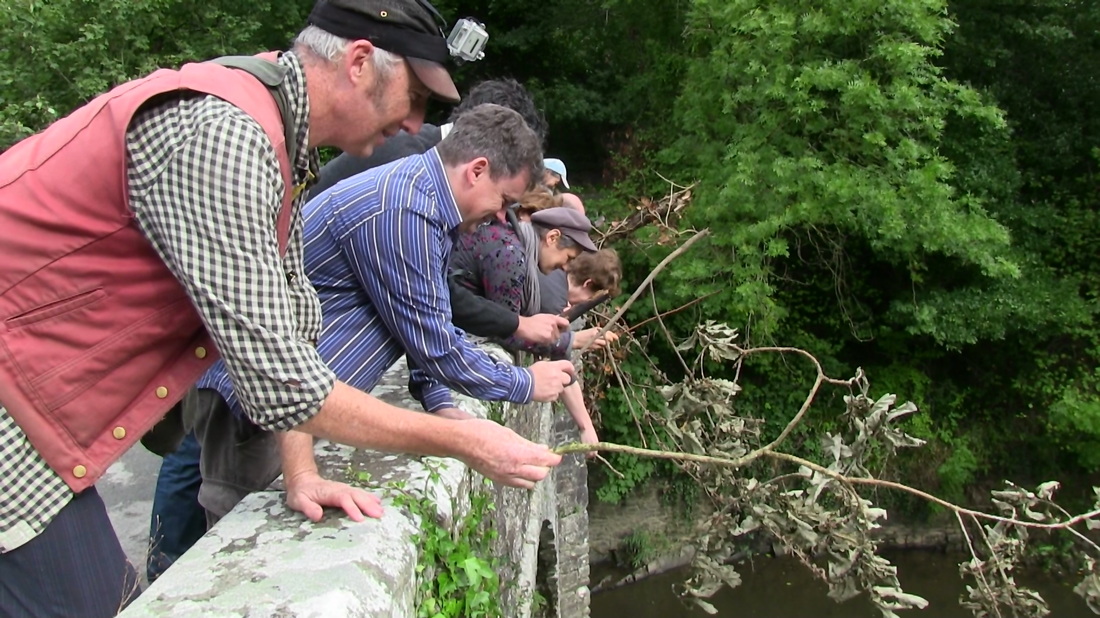

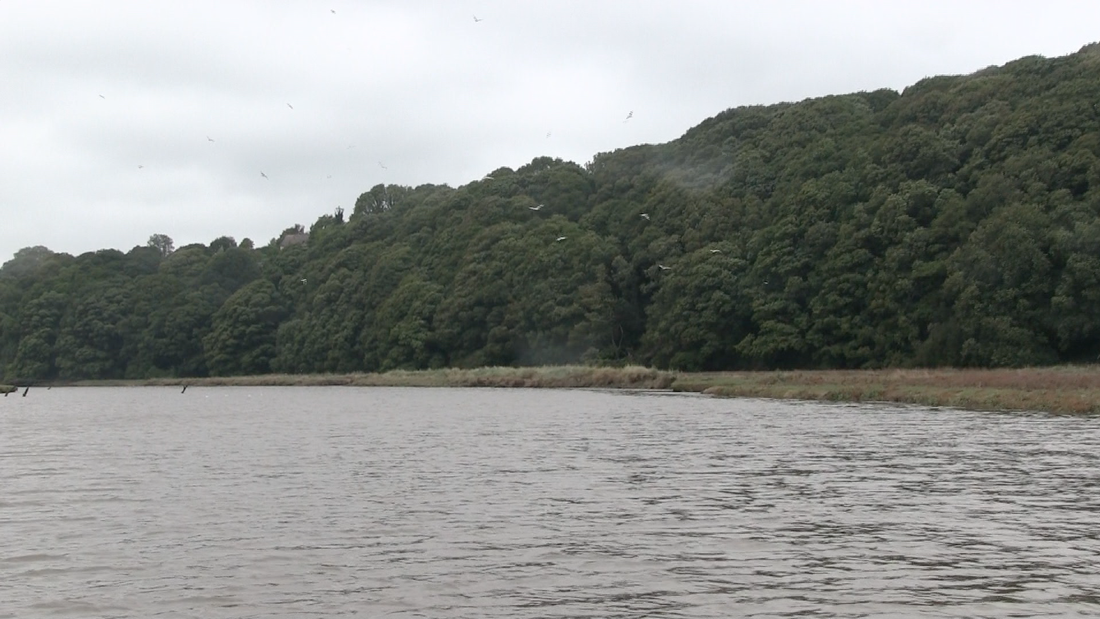

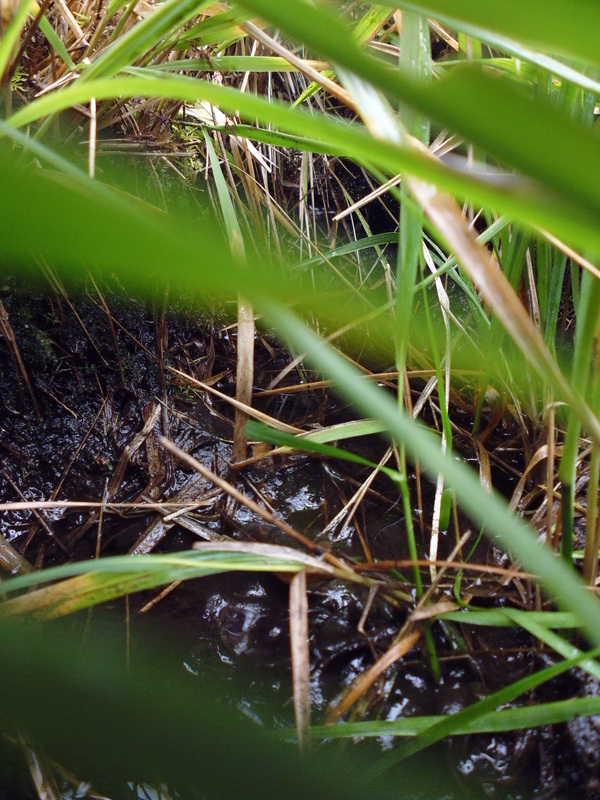
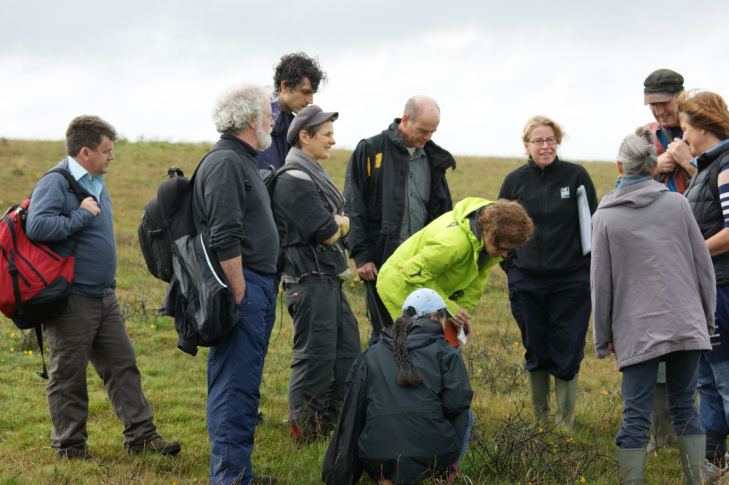
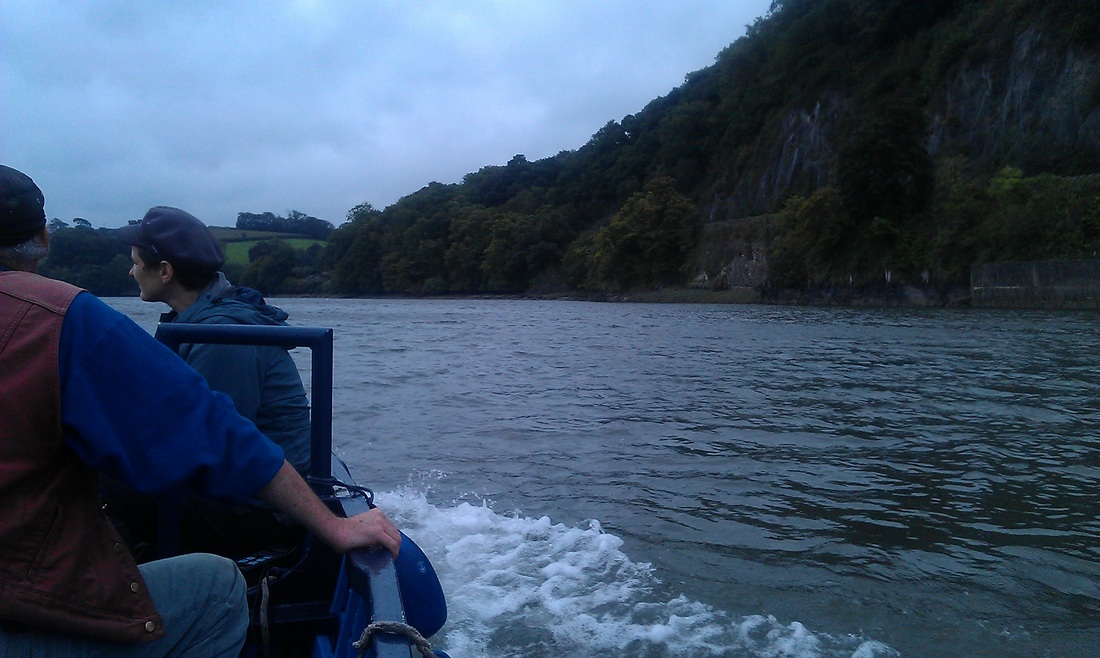
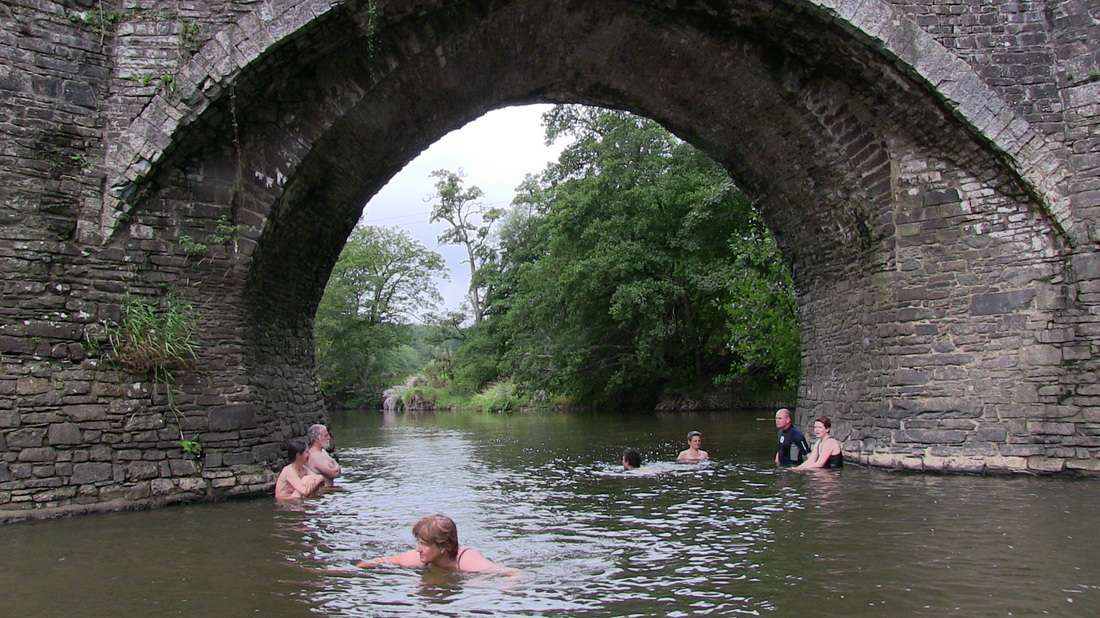
 RSS Feed
RSS Feed
